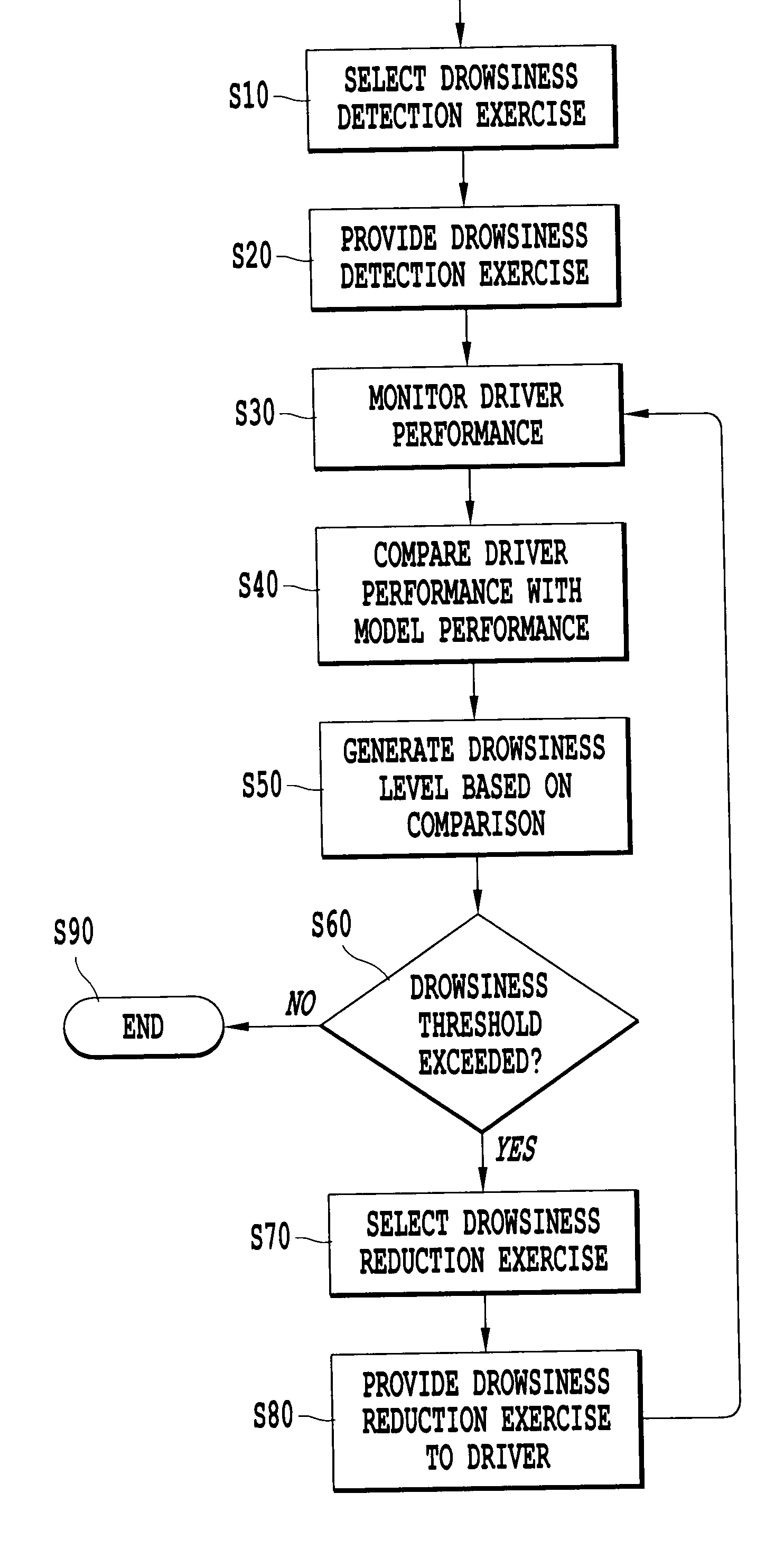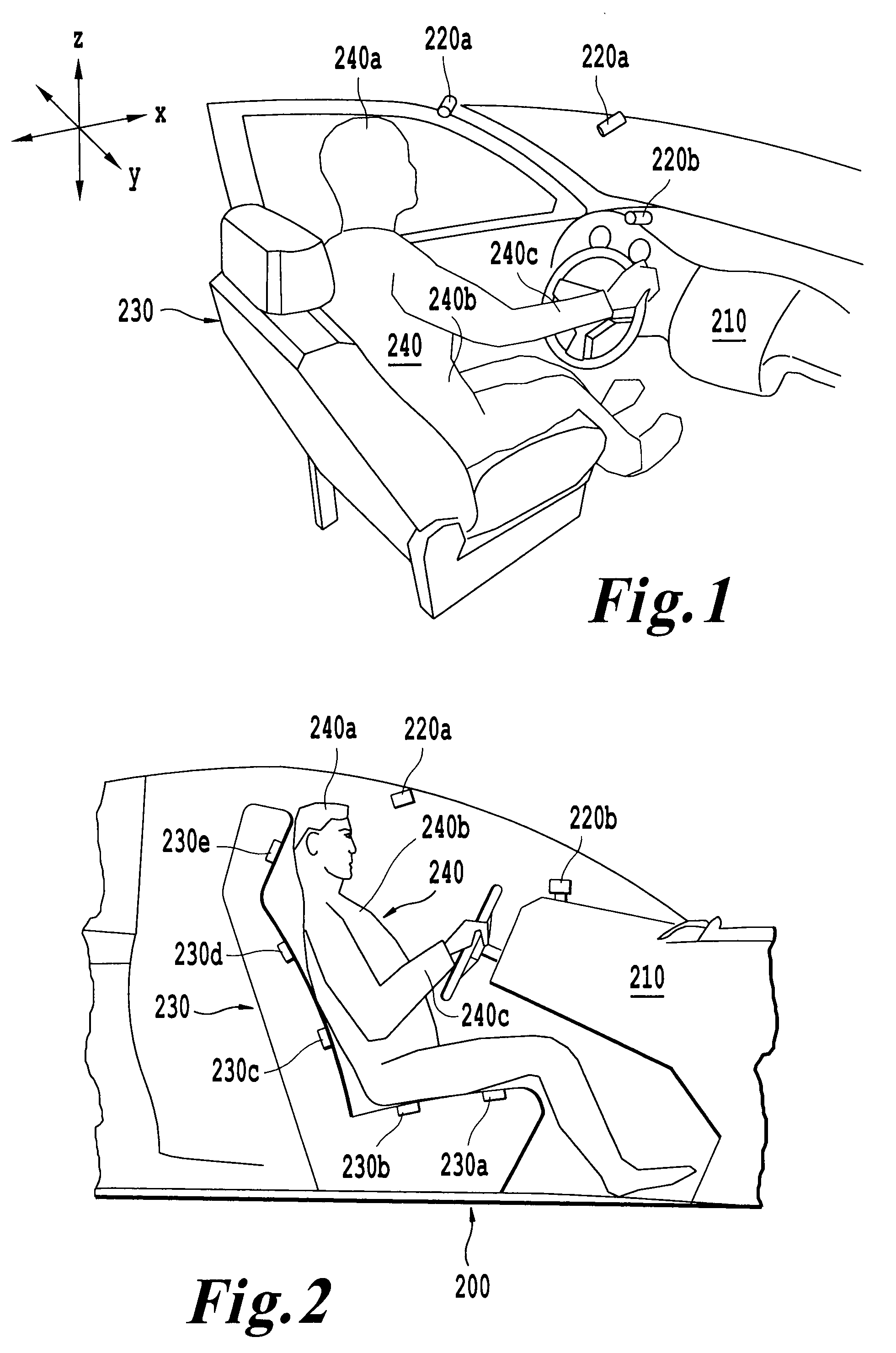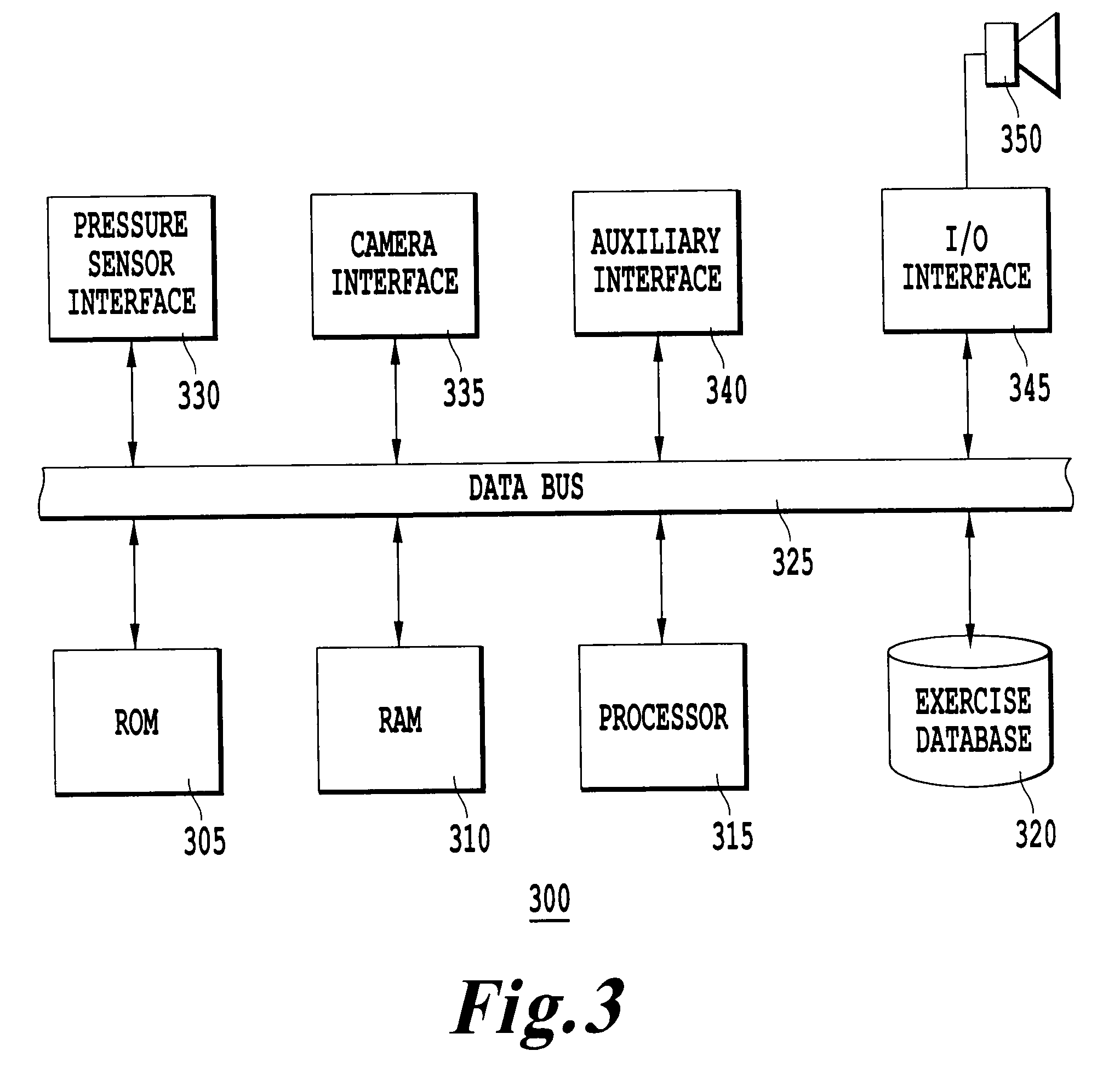System, apparatus and associated methodology for interactively monitoring and reducing driver drowsiness
a technology of interactive monitoring and driver drowsiness, which is applied in the field of system, apparatus and associated methodology for interactive monitoring and detecting driver drowsiness, can solve the problems of driver drowsiness, driver may be suffering from lack of sleep, and the driver is less able to handle quickly changing roadway conditions, so as to reduce driver drowsiness
- Summary
- Abstract
- Description
- Claims
- Application Information
AI Technical Summary
Benefits of technology
Problems solved by technology
Method used
Image
Examples
Embodiment Construction
[0020]The present description describes preferred embodiments of the invention by referring to the accompanying drawings.
[0021]FIG. 1 is a perspective view of a driver 240 seated in a vehicle 210 that is equipped with a drowsiness monitoring and reduction system according to an exemplary embodiment of the present invention. The driver 240 is seated on a driver seat 230 facing cameras 220a and 220b, which form part of the drowsiness monitoring and reduction system. The driver 240 may move his or her head 240a in any of an X, Y, and / or Z direction. Similarly, the driver's torso 240b and arm 240c may move in any of the Y, X and / or Z directions. The cameras 220a and 220b capture any motion from the driver's head 240a, torso 240b and / or arm 240c for processing and analysis by the drowsiness monitoring and reduction system.
[0022]FIG. 2 is a two-dimensional diagram of the driver 240 inside the vehicle 210 equipped with the drowsiness monitoring and reduction system according to the exempla...
PUM
 Login to View More
Login to View More Abstract
Description
Claims
Application Information
 Login to View More
Login to View More - R&D
- Intellectual Property
- Life Sciences
- Materials
- Tech Scout
- Unparalleled Data Quality
- Higher Quality Content
- 60% Fewer Hallucinations
Browse by: Latest US Patents, China's latest patents, Technical Efficacy Thesaurus, Application Domain, Technology Topic, Popular Technical Reports.
© 2025 PatSnap. All rights reserved.Legal|Privacy policy|Modern Slavery Act Transparency Statement|Sitemap|About US| Contact US: help@patsnap.com



